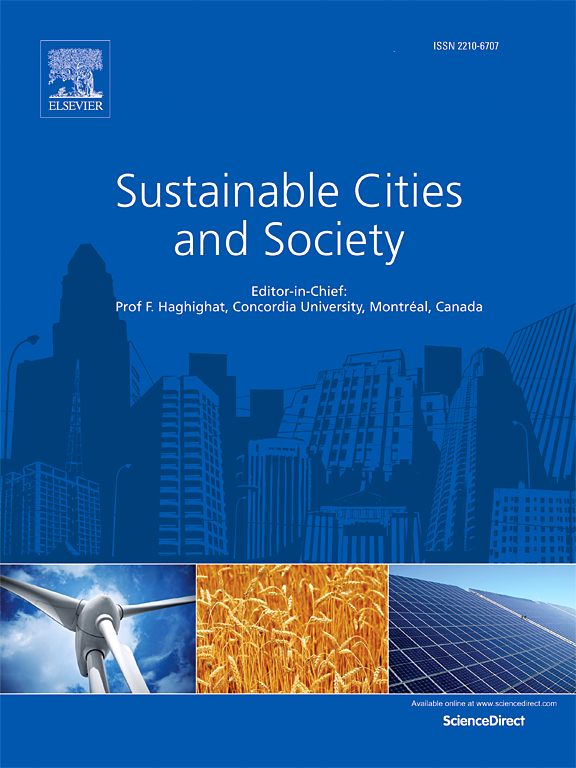Traffic noise assessment in urban Bulgaria using explainable machine learning
IF 10.5
1区 工程技术
Q1 CONSTRUCTION & BUILDING TECHNOLOGY
引用次数: 0
Abstract
Fine-grained noise maps are vital for epidemiological studies on traffic noise. However, detailed information on traffic noise is often limited, especially in Eastern Europe. When acoustic noise propagation models are unavailable, rigid linear noise land-use regressions are typically employed to estimate noise levels; however, machine learning likely offers more accurate noise predictions. We innovated by comparing the predictive accuracies of supervised machine learning models to estimate traffic noise levels across the five largest Bulgarian cities. In situ A-weighted equivalent continuous sound levels were obtained from 232 fixed-site monitors across these cities. We included transport- and land-use-related predictors using 50–1,000 m buffers. Extreme gradient boosting (XGB) had the highest ten-fold cross-validated fit (R²=0.680) and the lowest root mean square error (RMSE=4.739), insignificantly besting the random forest-based model (R²=0.667, RMSE=4.895). Support vector regression (R²=0.633, RMSE=5.358), elastic net (R²=0.568, RMSE=5.625), and linear regression (R²=0.548, RMSE=5.569) performed significantly worse. Shapley values for the XGB showed that the length of major roads within 100 m buffers, footways within 50 m buffers, residential roads within 50 m buffers, and the number of buildings within 50 m buffers were important non-linear predictors. Our spatially resolved noise maps revealed striking geographic noise variations and that, on average, 96.8 % of the urban population experiences harmful noise levels.

求助全文
约1分钟内获得全文
求助全文
来源期刊

Sustainable Cities and Society
Social Sciences-Geography, Planning and Development
CiteScore
22.00
自引率
13.70%
发文量
810
审稿时长
27 days
期刊介绍:
Sustainable Cities and Society (SCS) is an international journal that focuses on fundamental and applied research to promote environmentally sustainable and socially resilient cities. The journal welcomes cross-cutting, multi-disciplinary research in various areas, including:
1. Smart cities and resilient environments;
2. Alternative/clean energy sources, energy distribution, distributed energy generation, and energy demand reduction/management;
3. Monitoring and improving air quality in built environment and cities (e.g., healthy built environment and air quality management);
4. Energy efficient, low/zero carbon, and green buildings/communities;
5. Climate change mitigation and adaptation in urban environments;
6. Green infrastructure and BMPs;
7. Environmental Footprint accounting and management;
8. Urban agriculture and forestry;
9. ICT, smart grid and intelligent infrastructure;
10. Urban design/planning, regulations, legislation, certification, economics, and policy;
11. Social aspects, impacts and resiliency of cities;
12. Behavior monitoring, analysis and change within urban communities;
13. Health monitoring and improvement;
14. Nexus issues related to sustainable cities and societies;
15. Smart city governance;
16. Decision Support Systems for trade-off and uncertainty analysis for improved management of cities and society;
17. Big data, machine learning, and artificial intelligence applications and case studies;
18. Critical infrastructure protection, including security, privacy, forensics, and reliability issues of cyber-physical systems.
19. Water footprint reduction and urban water distribution, harvesting, treatment, reuse and management;
20. Waste reduction and recycling;
21. Wastewater collection, treatment and recycling;
22. Smart, clean and healthy transportation systems and infrastructure;
 求助内容:
求助内容: 应助结果提醒方式:
应助结果提醒方式:


